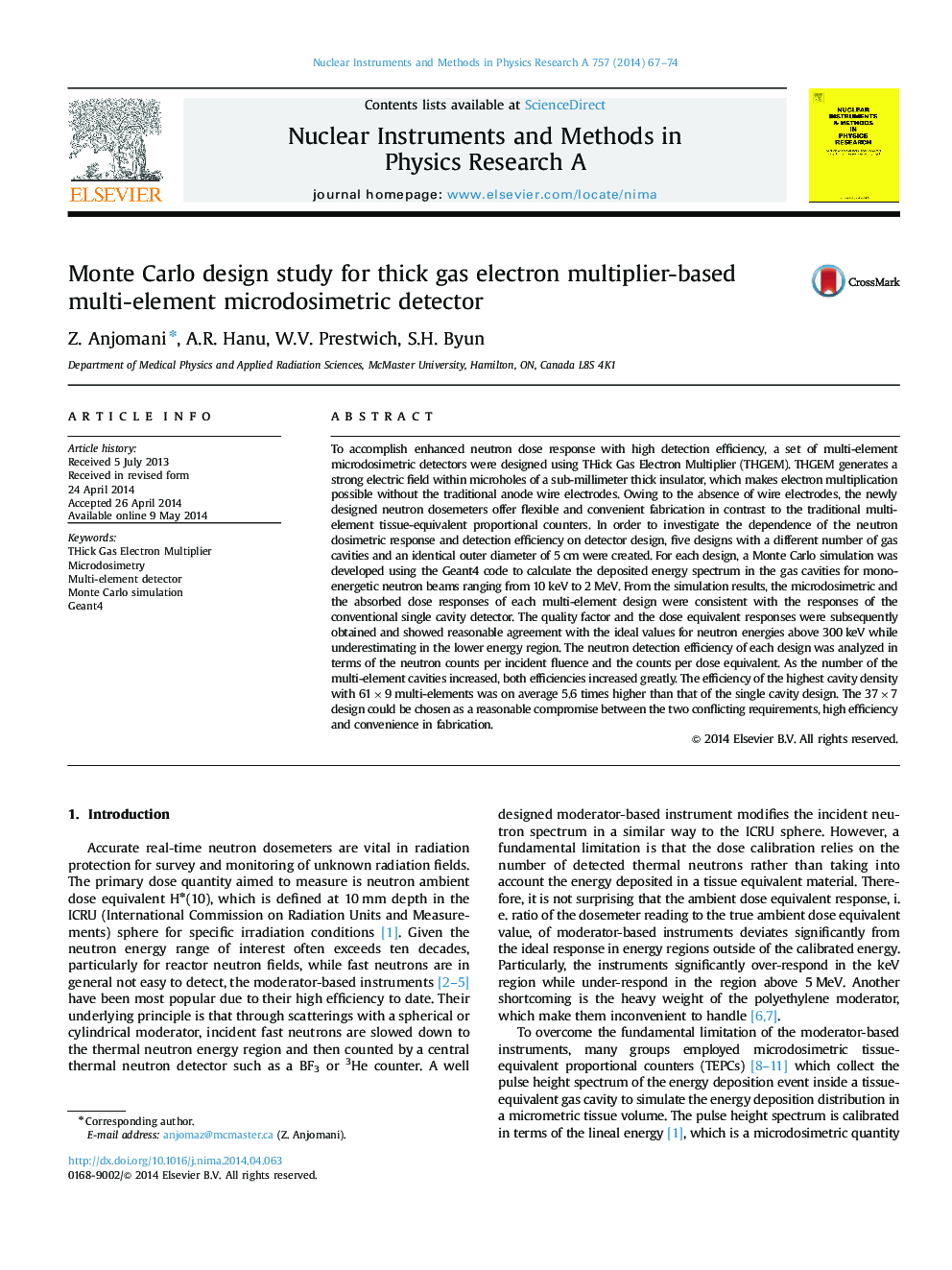| کد مقاله | کد نشریه | سال انتشار | مقاله انگلیسی | نسخه تمام متن |
|---|---|---|---|---|
| 1822588 | 1526369 | 2014 | 8 صفحه PDF | دانلود رایگان |
To accomplish enhanced neutron dose response with high detection efficiency, a set of multi-element microdosimetric detectors were designed using THick Gas Electron Multiplier (THGEM). THGEM generates a strong electric field within microholes of a sub-millimeter thick insulator, which makes electron multiplication possible without the traditional anode wire electrodes. Owing to the absence of wire electrodes, the newly designed neutron dosemeters offer flexible and convenient fabrication in contrast to the traditional multi-element tissue-equivalent proportional counters. In order to investigate the dependence of the neutron dosimetric response and detection efficiency on detector design, five designs with a different number of gas cavities and an identical outer diameter of 5 cm were created. For each design, a Monte Carlo simulation was developed using the Geant4 code to calculate the deposited energy spectrum in the gas cavities for mono-energetic neutron beams ranging from 10 keV to 2 MeV. From the simulation results, the microdosimetric and the absorbed dose responses of each multi-element design were consistent with the responses of the conventional single cavity detector. The quality factor and the dose equivalent responses were subsequently obtained and showed reasonable agreement with the ideal values for neutron energies above 300 keV while underestimating in the lower energy region. The neutron detection efficiency of each design was analyzed in terms of the neutron counts per incident fluence and the counts per dose equivalent. As the number of the multi-element cavities increased, both efficiencies increased greatly. The efficiency of the highest cavity density with 61×9 multi-elements was on average 5.6 times higher than that of the single cavity design. The 37×7 design could be chosen as a reasonable compromise between the two conflicting requirements, high efficiency and convenience in fabrication.
Journal: Nuclear Instruments and Methods in Physics Research Section A: Accelerators, Spectrometers, Detectors and Associated Equipment - Volume 757, 1 September 2014, Pages 67–74
